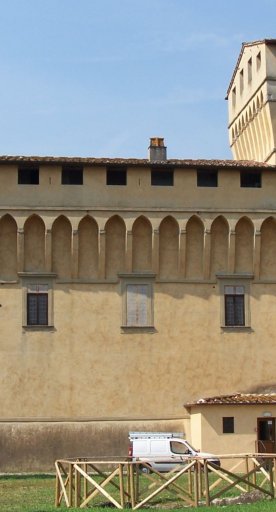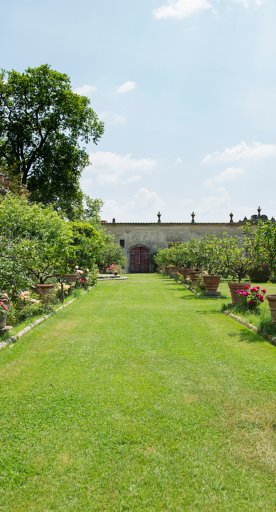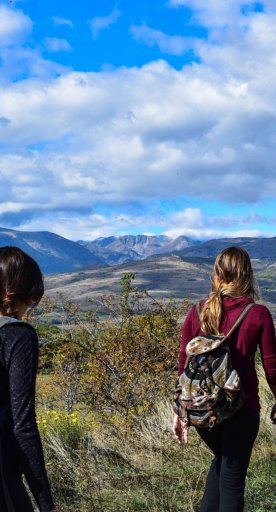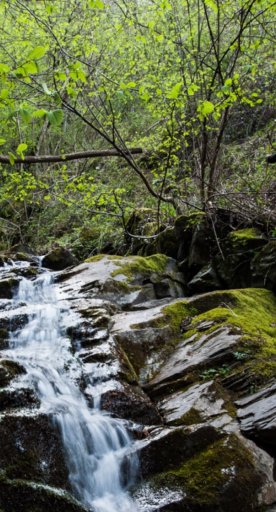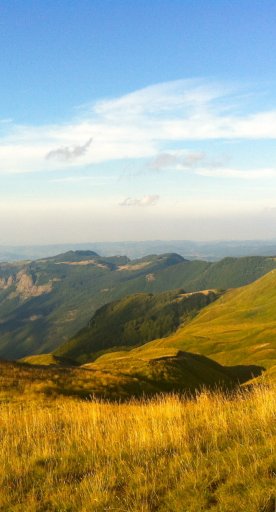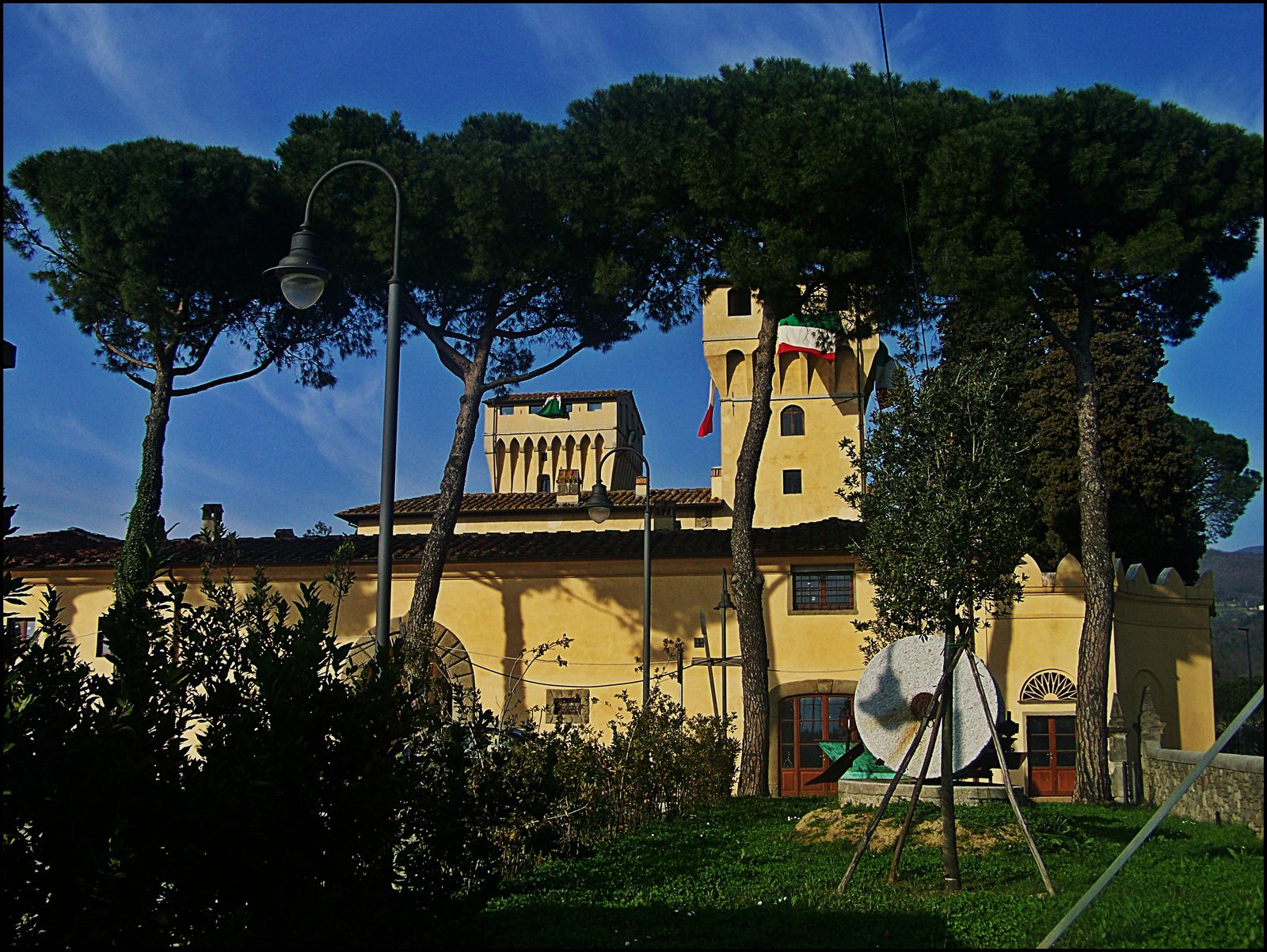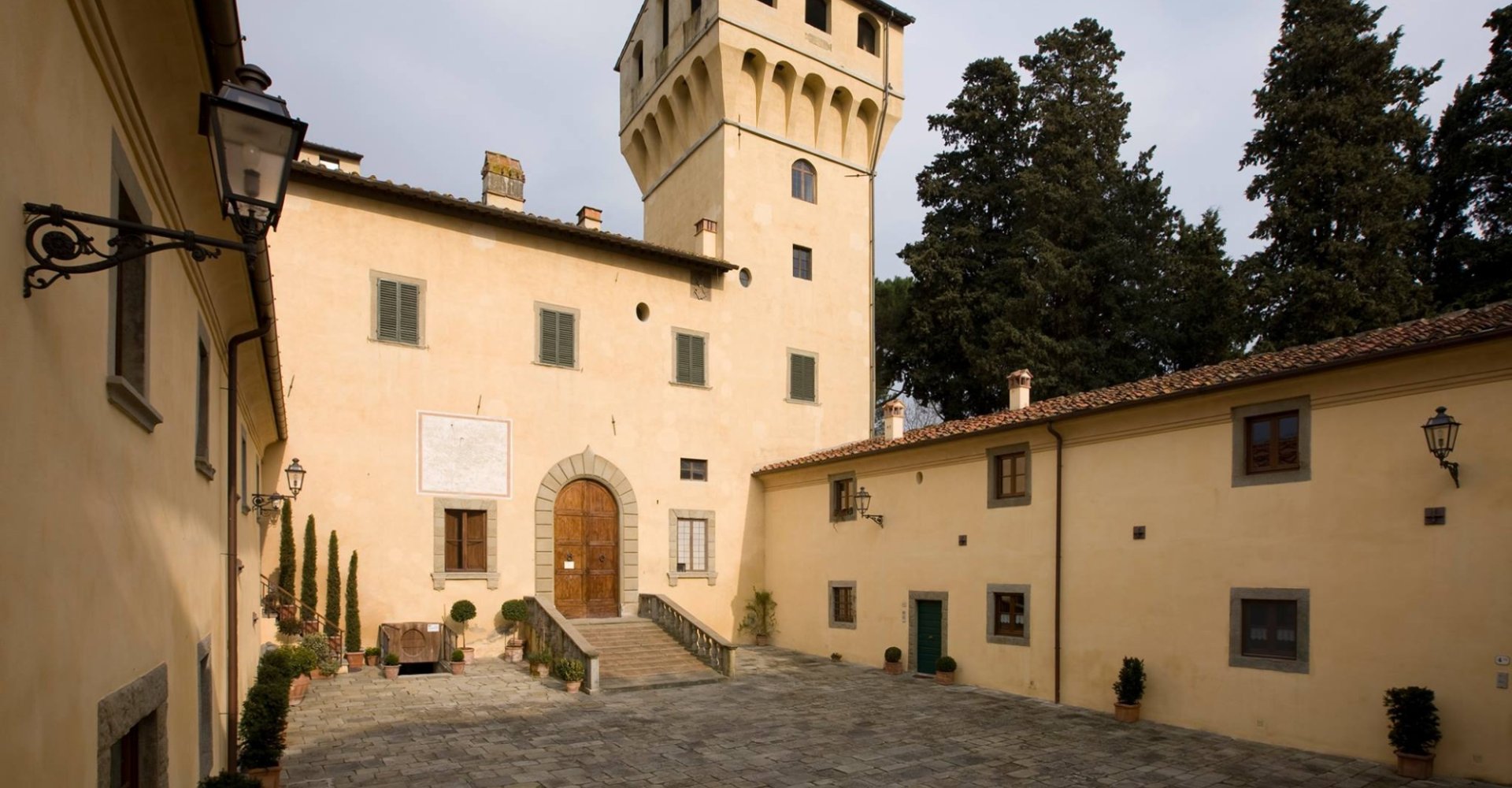
Montale
Itineraries for lovers of history and nature
Montale was built on a hill as a fortified village at the beginning of the thirteenth century. In 1303, when the Florentines prevailed in conflicts against them in Pistoia, the castle was conquered and subsequently destroyed and only a few traces remain today. Later, the town below developed to become the current-day Montale.
What to see in Montale
Traveling down a road that boasts pleasant views of the hills, home to villas and farmsteads, you can reach the town of Montale.
Once you arrive in the central Piazza Matteotti, you can visit the Parish Church of San Giovanni Evangelista, whose foundation date is unknown and whose appearance reveals that it has been modified several times. Inside the cupole, there are frescoes by Luigi Sabatelli, an important interpreter of Florentine romantic classicism.
The complex of the Villa Castello Smilea is now the headquarters of the municipality, and it stands out for its crenelated towers. It’s not certain how old the building is, which has changed use many times over the centuries, from a fortified noble residence to housing an agricultural business, though it’s never let go of that atmosphere of respect and that taste of history. Today, it is a cultural centre and houses the Library, the Municipal Historical Archive, and a permanent exposition dedicated to Jorio Vivarelli, with a collection of works by this famous local sculptor.
Traveling down a road that boasts pleasant views of the hills, home to villas and farmsteads, you can reach the town of Montale.
Once you arrive in the central Piazza Matteotti, you can visit the Parish Church of San Giovanni Evangelista, whose foundation date is unknown and whose appearance reveals that it has been modified several times. Inside the cupole, there are frescoes by Luigi Sabatelli, an important interpreter of Florentine romantic classicism.
The complex of the Villa Castello Smilea is now the headquarters of the municipality, and it stands out for its crenelated towers. It’s not certain how old the building is, which has changed use many times over the centuries, from a fortified noble residence to housing an agricultural business, though it’s never let go of that atmosphere of respect and that taste of history. Today, it is a cultural centre and houses the Library, the Municipal Historical Archive, and a permanent exposition dedicated to Jorio Vivarelli, with a collection of works by this famous local sculptor.
Nearby
In addition to the villa-castle, the religious buildings in the area around Montale are also worth mentioning. In the hamlet of Fognano, for example, you should definitely visit the Abbey of San Salvatore in Agna. This small building, characterized by a strong rural appearance, was probably where pilgrims would stop during their travels, thus the abbey might have served as a “hospice”. The earliest mention of the abbey dates to the year 772, when there was also a Benedictine convent attached to it.
Another place to visit in the area of Pistoia and the Pistoia mountains is Tobbiana, the highest town in the municipality. Here, along with being a starting place for hiking trails leading to the tops of the surrounding mountain peaks, you can visit the 18th-century Church of San Michele Arcangelo, which vaunts beautiful views of the territory below.
Lastly, for nature lovers, we recommend visiting the Acquerino Cantagallo Nature Reserve. This oasis in the heart of the Apennines has large forests of beech and chestnut trees, including some ancient trees. It is also home to deer, roe deer, wild boar, foxes, stone martens, porcupines and a multitude of bird species.
In addition to the villa-castle, the religious buildings in the area around Montale are also worth mentioning. In the hamlet of Fognano, for example, you should definitely visit the Abbey of San Salvatore in Agna. This small building, characterized by a strong rural appearance, was probably where pilgrims would stop during their travels, thus the abbey might have served as a “hospice”. The earliest mention of the abbey dates to the year 772, when there was also a Benedictine convent attached to it.
Another place to visit in the area of Pistoia and the Pistoia mountains is Tobbiana, the highest town in the municipality. Here, along with being a starting place for hiking trails leading to the tops of the surrounding mountain peaks, you can visit the 18th-century Church of San Michele Arcangelo, which vaunts beautiful views of the territory below.
Lastly, for nature lovers, we recommend visiting the Acquerino Cantagallo Nature Reserve. This oasis in the heart of the Apennines has large forests of beech and chestnut trees, including some ancient trees. It is also home to deer, roe deer, wild boar, foxes, stone martens, porcupines and a multitude of bird species.
Typical dishes and products
The territory of Montale is part of the production of Mortadella di Prato IGP, a traditional sausage whose origins date back to the sixteenth century. Its uniqueness derives from the spiciness and the addition of alkermes, a liqueur that0s typically used for sweets. Mortadella di Prato IGP can be enjoyed slightly warm or cold, as an accompaniment to other typical Tuscan appetizers.
The territory of Montale is part of the production of Mortadella di Prato IGP, a traditional sausage whose origins date back to the sixteenth century. Its uniqueness derives from the spiciness and the addition of alkermes, a liqueur that0s typically used for sweets. Mortadella di Prato IGP can be enjoyed slightly warm or cold, as an accompaniment to other typical Tuscan appetizers.
